If you’re starting with esports training drills for beginners, I want to keep this simple and honest. In my experience, you don’t need a fancy coach right away. You need aim training, reaction time exercises, better hand-eye coordination, and some small habits that don’t feel like homework. I’ve always found that people jump into ranked, tilt in five minutes, and then ask why their K/D ratio and map awareness didn’t magically improve. Spoiler: there are drills. Short ones. Stuff for FPS games, MOBAs, even strategy titles. And yes, I’ll talk about crosshair placement, tracking, flick shots, macro vs micro, VOD review, and other LSI keywords your SEO friend keeps whispering about.
Why bother with drills when I can just “play more”?
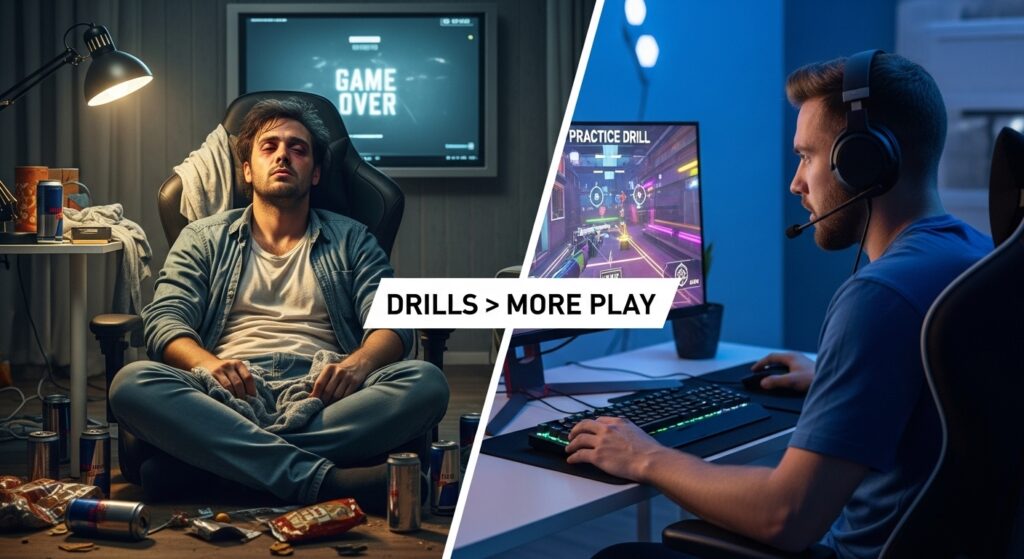
I’ll tell you why. “Just play more” is code for “keep your bad habits, but louder.” When I started, I spammed games for hours. I got decent, then stuck. The wall hit me, and it was brick. That’s when structured practice saved me. A drill isolates a skill. Like your crosshair. Or your timing. You repeat with clear goals. It’s boring. It works.
If you want a neat summary of what esports even is, Britannica has a tidy explainer here: What is esports? Not required reading, but it’s nice ammo for your parents when they ask why you’re “clicking heads” at 10 p.m.
Ground rules before you grind
- Warm up and cool down. Five to ten minutes each. Trust me, it matters.
- Settings first. Sensitivity, DPI/eDPI, FOV, keybinds. Lock them in for a week. Not a day. A week.
- Ergonomics. Chair, posture, wrist angle. Your hand is not a Lego. Don’t bend it like one.
- Small goals. “Hit 85% accuracy on tracking drill,” not “become top 500 by Friday.”
- Short sessions. 45–90 minutes of focused practice beats zombie clicking for 4 hours.
My quick “practice plan” snapshot (pseudo-table)
- Day: Monday | Focus: Aim mechanics | Blocks: 3 x 15 min | Goal: 80%+ on tracking
- Day: Tuesday | Focus: Movement + strafing | Blocks: 2 x 15 min | Goal: cleaner peeks
- Day: Wednesday | Focus: Game sense | Blocks: 2 x 20 min VOD review | Goal: 1 big lesson
- Day: Thursday | Focus: Crosshair placement | Blocks: 3 x 10 min | Goal: fewer wasted flicks
- Day: Friday | Focus: Team comms | Blocks: 2 scrim maps | Goal: short, clear callouts
- Day: Saturday | Focus: Mixed playlist | Blocks: 60 min total | Goal: keep it fun
- Day: Sunday | Focus: Rest + stretch | Blocks: 15 min stretch + 1 casual game | Goal: don’t burn out
The core mechanics I drill (and make my students do)
I’ve trained rookies, semi-pros, and that one guy who insisted his mousepad “aims better” when it’s sticky. It doesn’t. Bad mousepad equals chaos. Here are the basics I still run, even after a decade.
Aim training that isn’t mindless
I rotate between Aim Lab and Kovaak’s. Simple routines, strict goals. For rhythm and click timing, I sometimes use osu! for a few songs. Not because I’m an anime protagonist. Because it helps with timing and cursor control.
Tracking drill (10 minutes)
- Goal: Keep your crosshair glued to a moving target.
- How: Use a smooth tracking scenario. Aim for 80–90% time-on-target, not just bursts.
- Focus: No panic flicks. Small corrections. Control your breath.
Flick shots drill (10 minutes)
- Goal: Fast target acquisition without over-flicking.
- How: Practice random target spawns. Commit to the flick, then stop. No spraying.
- Focus: Start slow, build speed. Hits first, style later.
Target switching (10 minutes)
- Goal: Snap from target A to target B with minimal mouse travel.
- How: Prioritize closest angles first. Don’t cross the whole screen for no reason.
- Focus: Head level, pre-aim to common spots. Efficiency over drama.
Crosshair placement that saves you from yourself
Crosshair at head level. Pre-aim common angles. Then when someone peeks, you’re already on them. Less “giant swoop,” more “tiny tap.” I make players do lazy map laps while holding crosshair level at corners. You feel dumb doing it. Then you feel smart when your TTK drops.
Corner pre-aim laps (8 minutes)
- Goal: Always enter sightlines with your crosshair on the likely head spot.
- How: Walk a map in customs. Stop at each corner. Adjust to head height. Move on.
- Focus: No jumping crosshair. Smooth entries. 1:1 for left and right corners.
Movement and strafing, a love-hate story
Strafing is your invisible shield. Peeking correctly can win fights before they start. If your movement is loud and random, you hand the enemy your head on a plate.
Counter-strafe drill (10 minutes)
- Goal: Fire while fully accurate after a strafe.
- How: Strafe left, stop, single tap. Strafe right, stop, single tap. Repeat.
- Focus: Timing your stop. Gun bloom should reset before you shoot.
Peek advantage drill (10 minutes)
- Goal: Abuse peek timing without overexposing.
- How: In customs, jiggle peek a corner. Show shoulder, not torso. Snapshot imaginary target.
- Focus: Small peeks. Don’t sprint into the angle like a linebacker.
Recoil control that doesn’t wreck your wrist
Learn the first 10–12 bullets of your gun. Burn that pattern into muscle memory. If you’re yanking your mouse like you’re mowing a lawn, slow down.
Spray practice (8 minutes)
- Goal: 10-bullet burst into a small box at mid-range.
- How: Shoot the wall. Draw the pattern. Pull against it. Repeat in sets of 10.
- Focus: Smooth correction, not panic dragging.
Game sense isn’t magic, it’s habit
Game sense is a stack of tiny reads. Enemy tendencies. Timing. Utilities. Rotations. It looks like magic only to people who don’t review their games.
The VOD review I make everyone do
- Pick your last 2 ranked matches. Yes, the ones where you got stomped.
- At each death, pause. Ask: where was my crosshair? What info did I ignore? Could I have traded?
- Write one lesson per game. Not ten. One.
This is what people mean by deliberate practice. Less aimlessly grinding, more focused reps on weak spots. If you want the nerd version of that idea, read this: deliberate practice. I used it with a 14-year-old player who went from bronze to mid-plat in eight weeks. Not because he’s a prodigy. Because he did boring things well.
Minimap checks and timing
- Set a timer in your head. Every 3–5 seconds, eyes bounce to the minimap. Then back.
- When someone shows on the flank, count to five. Expect a teammate trade or a rotation.
- Keep a loose mental log: “Two on A, one mid, last seen 20 seconds.” It’s not math class. It’s breadcrumbs.
Macro vs micro, quick and dirty
- Micro: aim, movement, crosshair.
- Macro: rotations, economy, objective timing, team roles.
- Beginners tend to obsess over micro and forget macro. You need both. Half and half, like your coffee.
Comms: say less, mean more
Good communication is short, clear, and useful. Not a podcast. Not a TED talk. My team comms rule: call the enemy, the location, and the plan in under five seconds.
10-minute comms drill
- Load a custom map with a friend.
- Walk through callouts: “One top stairs, I’m flashing, swing in 3…2…1.”
- Record. Re-listen. Trim filler words. Keep the rhythm.
Comms bingo (silly but works)
- Make a bingo card with words like “uh,” “maybe,” “idk,” “push?”
- Try to avoid filling the card in one match.
- It trains you to speak with intent. Or at least with fewer “ums.”
My warm-up and cooldown that keeps me sane
I used to jump straight into ranked. Five losses later, I wondered why my hands felt like noodles. Now I do this.
15-minute warm-up (pseudo-table)
- 5 min: Wrist circles, finger stretches, shoulder rolls
- 5 min: Aim Lab tracking (medium difficulty)
- 5 min: Crosshair placement laps on a map
10-minute cooldown
- 3 min: Slow tracking to relax hands
- 4 min: Light stretch, deep breathing
- 3 min: Write one win and one fix in a note
Hardware, settings, and the stuff nobody wants to talk about
- Mouse sensitivity: start low-to-medium. Something like 800 DPI with a sane eDPI. Small motions. Big control.
- Mousepad: clean it. If it looks like a pizza, you’re sabotaging your glide.
- Monitor refresh rate: 120–240 Hz if you can. If not, no panic. Train anyway.
- Latency and ping: if your ping is 120+, work on game sense more. You win with brains when the net says no.
- Posture: feet flat, shoulders down, wrists neutral. Carpal tunnel is not a personality trait.
Three practice blocks you can actually keep
30-minute “I have homework” block
- 10 min aim (tracking + flicks)
- 10 min crosshair laps + counter-strafing
- 10 min VOD review (two deaths, two notes)
60-minute “after school” block
- 10 min warm-up stretch
- 15 min aim playlist
- 15 min movement + peeking
- 10 min game sense drill
- 10 min cooldown + notes
90-minute “I’m serious” block
- 10 min stretch + breathing
- 20 min aim (split tracking/flicks/targets)
- 20 min crosshair + recoil control
- 20 min VOD review with one focus (timing or rotations)
- 20 min scrim or ranked with a goal
Scorecards I’ve used with beginners (pseudo-table)
- Day: Monday | Tracking accuracy: 78% → 81% | Flick precision: 62% → 67% | Note: overflicking left
- Day: Wednesday | Crosshair laps: 3 maps | Deaths from bad crosshair: 5 → 3 | Note: better on right-angles
- Day: Friday | Comms clarity: 6/10 → 7/10 | Filler words: 22 → 12 | Note: shorter calls help
Common mistakes I keep seeing (and used to make)
- Changing sensitivity daily. Your muscles need time to learn. Stop yanking the dial.
- Skipping warm-ups. Then blaming the game. Or the moon. Or Mercury.
- Playing when tilted. That elo spiral? It’s you, not the stars.
- Never reviewing games. You relive pain, yes. But you also learn.
- Copying pro crosshairs and binds. You are not that pro. You are you. Build from your hands.
MOBA and strategy drills (because not everything is headshots)
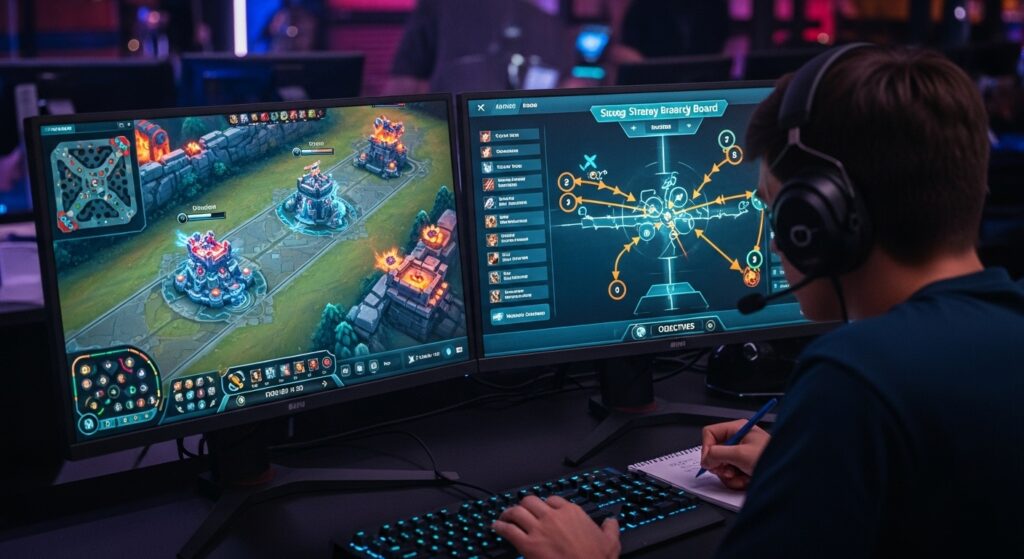
I coach more FPS than anything, but I grew up on MOBAs and RTS too. And the drills look different, but the spirit is the same.
MOBA basics
- Last-hit training: 10 minutes in a custom. Aim for 9/10 per wave without abilities.
- Map awareness: every time a wave meets, glance at minimap. Count enemies seen.
- Objective timing: write spawn times on a sticky note until it’s muscle memory.
- Communication: short pings plus one line call, “bot missing 2, warded river.”
Strategy and RTS drills
- Build order reps: 5 repeats without changes, then 5 more with scouting reaction.
- APM with purpose: 5 minutes of unit grouping and camera hotkeys. Not spam. Real actions.
- Decision snapshots: pause a replay every 2 minutes; ask “what is my win condition now?”
Mind and body stuff you’ll thank me for later
- Hydration: drink water. Not energy drinks only. Your brain is not a cactus.
- Sleep: 7–9 hours. Memory builds when you sleep, not when you doomscroll.
- Stretching: wrists, fingers, neck, shoulders. 5 minutes can save months of pain.
- Tilt control: two losses in a row? Stand up. Touch grass or at least your kitchen.
- Breathing drill: 4 seconds in, 4 hold, 4 out. Repeat 5 times. Lowers heart rate. More headshots.
“But how do I know it’s working?”
Two ways. First, your drill numbers go up. Accuracy, time on target, last-hits per minute, whatever fits your game. Second, your bad habits show up less in matches. Fewer dry peeks. Faster rotations. Cleaner comms. You might not climb fast at first, but fights will feel easier. It’s weird. In a good way.
A few tools I actually use (and why)
- Aim Lab or Kovaak’s: good for structured aim playlists and tracking scores.
- osu!: I use this to warm up rhythm and click timing. Two songs, that’s it.
- Game replays/VODs: record everything. Even the ugly ones. Especially those.
- Notebook app: one lesson per session. If you write ten, you’ll remember zero.
How I coach beginners without frying their brains
I build a 4-week plan. Week one is settings + warm-up routine. Week two adds aim blocks. Week three adds game sense. Week four adds comms and scrims. If someone wants help, I always say send me a VOD and I’ll poke holes in it with love. If you’re stuck and want feedback without the awkward “uh, what do I fix?” talk, you can reach out here. I don’t bite. I roast gently.
Sample 4-week starter plan (pseudo-table)
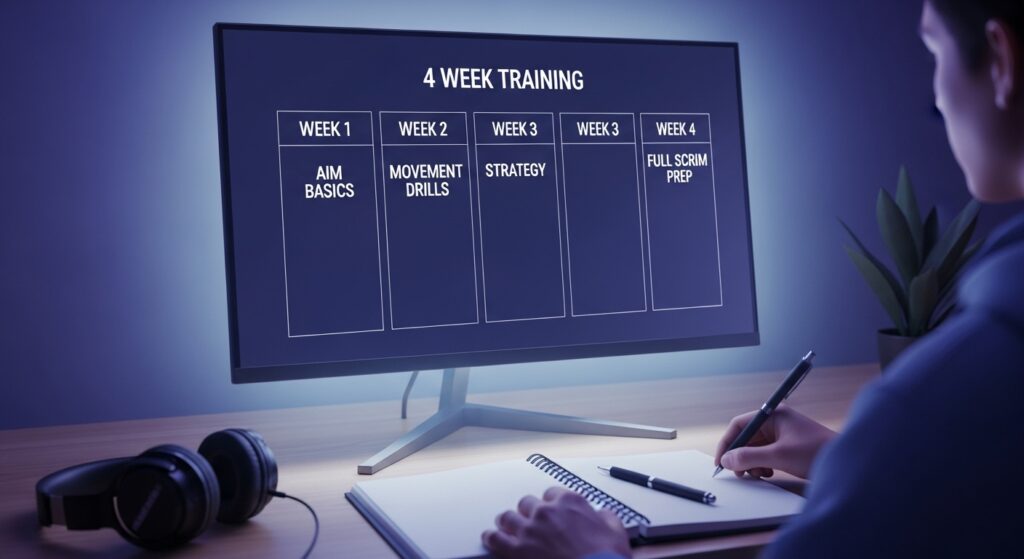
- Week 1: Setup + warm-up | 30–45 min sessions | Goals: stable sens, clean crosshair laps
- Week 2: Aim + movement | 45–60 min | Goals: 80% tracking, basic counter-strafe
- Week 3: VOD + game sense | 60 min | Goals: one lesson per match, fewer dry peeks
- Week 4: Comms + scrims | 60–90 min | Goals: clear calls, 2 scrims, review notes
A few tiny hacks that feel illegal (but are not)
- Head level tape trick: put a small piece of tape on your monitor at head height in a common corridor. Train to that line. Remove tape before real matches. Obviously.
- Focus music: one loop. Same song every warm-up. Your brain learns “this sound = aim mode.”
- One mouse grip rule: claw, palm, or fingertip. Pick one for a month. Stop switching every match.
Okay, but where does the fun live?
Right in the middle. In the small wins. Watching your crosshair land where it should. Calling a rotate and getting it right. Turning a 0–5 start into a decent game because you stopped tilting. This is why I like esports training drills for beginners: they make progress obvious. Not glamorous. Obvious. And that’s enough most days.
My personal pre-match checklist (tiny, fast)
- Stretch wrists, check posture.
- Run 10 minutes of aim and crosshair laps.
- Check ping and FPS. If terrible, switch focus to VOD reviews for the day.
- Pick one goal for the session: “better peeks” or “call rotations.” One. Not five.
Mini “cheat sheet” (pseudo-table)
- Drill: Tracking | Time: 10 min | Goal: 85% time-on-target | Note: smooth, don’t chase
- Drill: Flicks | Time: 10 min | Goal: reduce overflicks by 20% | Note: commit and stop
- Drill: Crosshair laps | Time: 8–10 min | Goal: head level on entries | Note: pre-aim corners
- Drill: Counter-strafe | Time: 10 min | Goal: accurate first shot after stop | Note: timing > speed
- Drill: VOD review | Time: 15–20 min | Goal: 1 lesson | Note: pause on deaths
A quick word on expectations
Most players want big gains in a week. It takes longer. The first gains are boring: fewer bad peeks, better crosshair, calmer hands. After a month, fights feel slower. Like you see one more frame than before. That’s the good stuff.
When to adjust your plan
- If you’re not improving one metric after two weeks, change the drill or the difficulty.
- If hands hurt, stop and stretch. Pain is not grind. It’s a warning.
- If boredom hits hard, rotate drills. Same goals, new flavors.
FAQs (real questions I get all the time)
- How long should I practice each day if I’m brand new? — I like 30–45 minutes max. Short, focused, and you’ll actually keep it up.
- Do I need Aim Lab or Kovaak’s to get better? — No, but they help. You can do crosshair laps and recoil drills in-game if money’s tight.
- My ping is bad. Should I even try? — Yes. Focus on game sense, positioning, and comms. You’ll learn to win with brains when your net says “nah.”
- How fast will I rank up? — Depends. If you drill and review, a full rank in a month is possible. Some do it faster, some slower. Don’t chase numbers every day.
- How do I stop tilting after two bad games? — Hard stop rule. Two losses, take a break. Stretch, breathe, maybe review a round. Come back with a single goal.
If you’ve read this far, you’re probably serious, or at least stubborn. Good. That’s step one. The rest is reps and fewer bad habits. I’ll be here grumbling about mousepads and cheering when your crosshair stops floating away like a balloon.
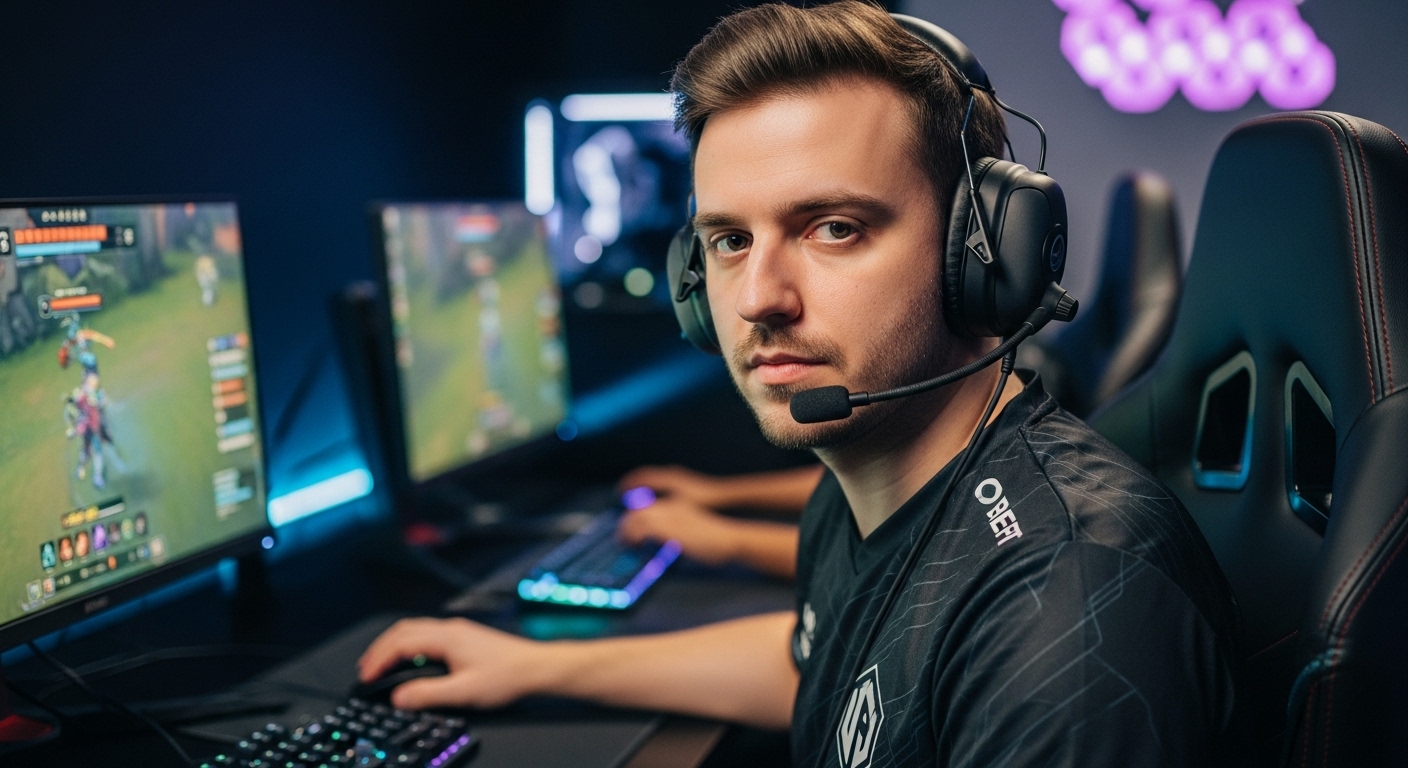
John | Your source for Esports, Battle Royale, Role-Playing, Retro Games, and Gaming Gear. Let’s Enjoy!

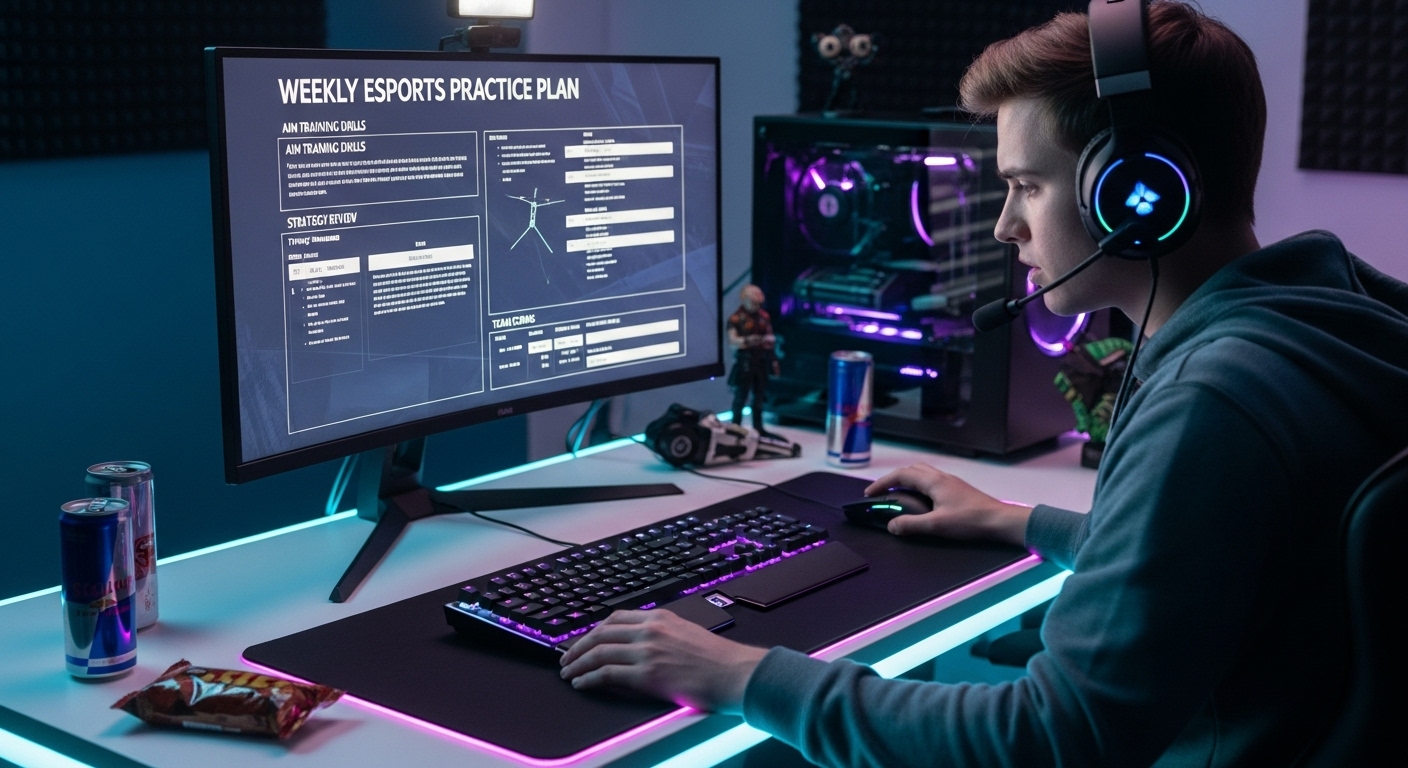

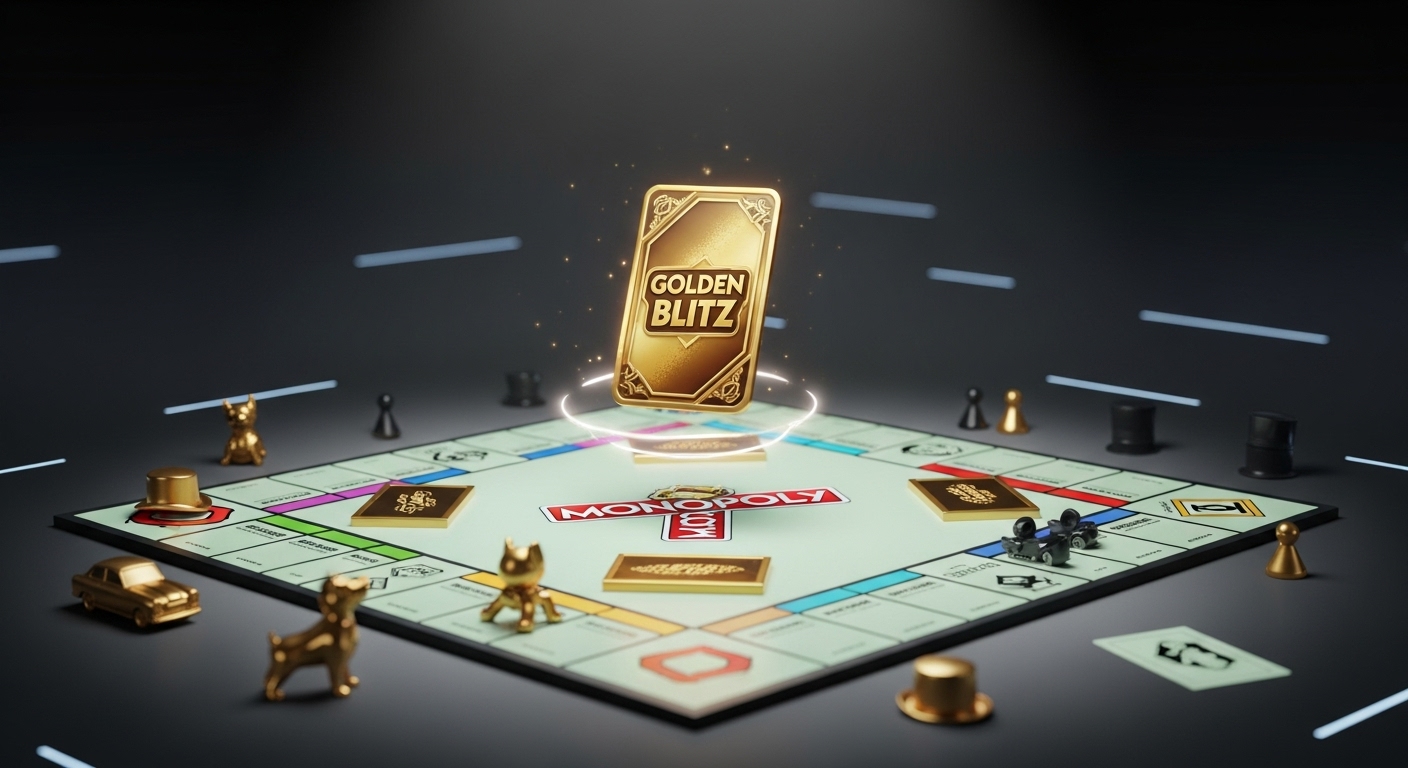
Love the emphasis on structured practice and small goals. Definitely helpful for growth and improvement.
Esports drills are crucial for improving skills efficiently, structure equals progress – boring but effective!
Interesting insight on the importance of structured practice over just playing more. Boring but effective!
I never realized how strategic esports training is. The dedication and focus are admirable for mastering skills.
Love the practical tips on improving in esports – structure and drills are key for growth and consistency.
The importance of structured drills in esports is crucial for breaking bad habits and improving skills efficiently.
Love the structure and variety in these training drills. Definitely trying out the tracking and flick shots!
How can I improve my crosshair placement without it feeling like a chore?